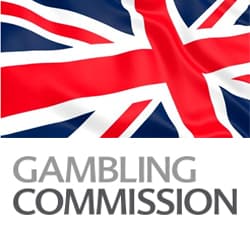UKGC Problem Gambling Survey Shows Mild Increase in Gambling Behaviours
The United Kingdom Gambling Commission’s recent release of its periodic study on national gambling behaviour, including addictive and problem gambling, offered plenty of information but very little in the way of outrights surprises: Problem gambling (and gambling participation and behaviour in general) have upticked by a small amount since the previous national study was completed five years ago. In itself that’s to be expected, given the increased availability and access to services for those with the inclination to wager.
 The study, initiated in 2015 and just released in recent days, mirrors a similar effort that was begun in 2010 and published in 2012. The UKGC had already released some intermediate findings in recent months.
The study, initiated in 2015 and just released in recent days, mirrors a similar effort that was begun in 2010 and published in 2012. The UKGC had already released some intermediate findings in recent months.
Among public expectations was that the findings would support the growing public-opinion war about FOBTs (fixed-odds betting terminals), which have received plenty of airtime over the past couple of years as being one of the most pernicious forms of gambling, inducing and encouraging problem behaviour. That FOBTs can be a problem for some punters remains an issue, but it really wasn’t the focus here. Nor were several of the online-gambling services also cited, especially by gambling foes, as needing to be curtailed.
Instead, the results showed a lot of things that most of us already knew or would have likely to have assumed to be true anyway:
- 1.4% of gamblers were classed as problem gamblers (0.8% of the population), with 6.4% at-risk (3.9% of the population) – which is similar to the rate published in the 2012 report.
- Problem gambling was more prevalent among people who had participated in a multiple gambling activities in the past year, than those that had just participated in one.
- 63% of adults (aged 16 and over) in Great Britain had gambled in the past year.
- Men (66%) are more likely to gambling than women (59%).
- Most popular gambling activities were: National Lottery draws (46%), scratchcards (23%) and other lotteries (15%).
- Overall participation was highest among the middle age groups and lowest among the youngest and oldest age groups.
- Those in employment or training were more likely to gamble (69%). Participation by those unemployed was at 56% and 57% for those retired.
Many outlets, searching for a way to cause alarm, seized on the fact that the “problem gambler” percentage of the population was up by 33%! Except that that percentage was derived from a marginal uptick — 0.6% to 0.8% — in one of the fringe measurements of the study. The effort surveyed roughly 15,000 respondent, overall, but both rounding and variance errors can come into play. The overall “at risk” population appears to be a more reliable indicator, and those numbers were “similar” when comparing 2015 to 2010.
Which isn’t to make light of any of the problems addictive behaviour causes… far from it. Though the FOBT question went largely unexplored, the study did show that whatever FOBT abuse exists is likely to disproportionately affect men. Men have long been the dominant target auience of betting shops, and this report showed that tradition held: 10% of male survey respondents reported betting in shops, compared to just 1% of women. (That 10:1 ratio was the largest gender-related difference in the entire study). FOBT use was reported by 6% of all male respondents, compared to again, just 1% of female respondents, and again, there may be some rounding considerations not fully published by the UKGC.
If there is a cause for concern among the secondary numbers, it’s that FOBT use is more favored by younger gamblers than by older ones. Overall, lottery offerings remain the most popular form of gambling activity, and they are disproportionate enjoyed by older gamblers, to the extent of skewing the study in favor of older gamblers in general.
Younger punters, in contrast, are far more likely to bet on sports or play the machines. Lottery style offerings are enjoyed by at least 46% of all age brackets 26 and up, topping out at 59% for age 35-44. The 16-24 age group is the outlier, at just 24%
Now consider sports betting — in a shop, as only “live” wagering was studied — and it’s a flip-flop. Only 3% of the 65-74 group bet on sports, while that percentage was 16% for age 25-34 and 17% for age 16-24.
The FOBT splits were even more age-skewed: For age 74+, it was 1%, for age 65-74, 0% (likely less than 0.5%), for age 55-64, another 1%. For the 25-34 group, however, this comes in at 10%, and it’s 14% for those age 2 and under. Similar age shifts show up across the board in machine-related gambling activities, mirroring the percentage of punters who wager online.
The study’s results are likely to be waved around as part of the UKGC’s ongojng cautionary tale, helping emphasize the areas where attention needs to be focused. To that extent, it’s a very good thing. The study’s breakdowns show that gambling behaviours are shifting, even if “problem gambling” appears to be more of a flatline condition; those who can’t control will fnd an outlet of some form, even if that outlet will change.
For those interested in downloading and studying the UKGC’s complete 68-page report, the link is here.





